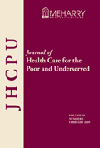 Clinicians and Gun Violence: What to know and what to do
Clinicians and Gun Violence: What to know and what to do
By Annie Savarese, MD
On December 14, 2012, twenty children and their teachers were murdered at Sandy Hook Elementary. In January of this year, there were forty-three fatal shootings in Chicago. In the United States, gun violence is responsible for over 30,000 deaths and over 70,000 injuries every year. On average, 282 people are shot daily and 50 of them are children or teenagers.
How have the medical and political communities responded to the issue of gun violence?
On January 8, 2013, the American Medical Association, along with more than fifty other medical societies sent a letter to President Obama offering their collective experience and expertise to help with the epidemic of gun violence. They proposed the need for stricter gun policy, greater mental health access, and more resources for gun safety preventive measures.
On January 16, 2013, the White House published President Obama’s plan to help reduce gun violence, “Now is the time: The President’s plan to protect our children and our communities by reducing gun violence”.
The four pillars of his proposal include:
- Closing background check loopholes to keep guns out of dangerous hands
- Banning military-style assault weapons and high-capacity magazines, and taking other common-sense steps to reduce gun violence
- Making schools safer
- Increasing access to mental health services
Christine S. Moyer’s article, “Obama enlists doctors for gun violence prevention” details the President’s proposals as related specifically to clinicians. Of special note, the President provided:
- Clarification that Affordable Care Act does not prohibit physicians from discussing gun safety with patients
- Assurance that physicians can report all credible threats of violence to the police without fear of violating the Health Insurance Portability and Accountability Act Privacy Rule
- Authorization for the Centers for Disease Control to resume its previously suspended research on gun violence
What can individual clinicians do to help with the issue of gun violence at the patient-provider level?
- Use violence screening tools
- GUNS, a mnemonic developed by The Handgun Epidemic Lowering Plan (HELP) to screen for gun safety
- Is there a Gun in the household in which the patient lives?
- Does the patient associate with Users of drugs or alcohol?
- Does the patient feel the Need to protect him or herself?
- Do any of these Situations exist: being a witness to violence or being involved in violence?
- EnLiST, a mnemonic developed by The American Academy of Pediatrics for clinical violence prevention and management
- early nurturing
- limit-setting
- screening for risk and assurance of safety
- treatment of the physical and psychological consequences of violence
- Since suicide accounts for more gun-related deaths than homicide, patients need to be screened for the following suicide risk factors
- mental illness
- substance abuse
- domestic violence
- GUNS, a mnemonic developed by The Handgun Epidemic Lowering Plan (HELP) to screen for gun safety
- Counsel at-risk patients
- The American College of Physicians recommends that patients should be informed of the dangers of firearms and advised on ways to decrease their risk of injury (i.e. Handout from the Washington State Department of Social and Health Services)
- The American Academy of Pediatrics published a revised policy statement, “Firearm-Related Injuries Affecting the Pediatric Population”, which recommends removing guns from homes and counseling parents on gun safety
- Connected Kids: Safe, Strong, Secure includes a clinical guide and handouts for violence prevention counseling
- Complete the STRYVE Online Training, which explores the key concepts and strategies of youth violence prevention
- Report all credible threats of violence to the police
- Provide resources to gun violence victims
What can individual clinicians do to help with the issue of gun violence on a larger, public health level?
- Get informed by reading more about the issue
- Harvard School of Public Health hosts an online forum to discuss the issue of gun violence as a public health issue
- Johns Hopkins Bloomberg School of Public Health, Center for Gun Policy & Research has a very comprehensive website with excellent links to research, publications, and other resources
- The Brady Center to Prevent Gun Violence includes many educational, policy, and media resources
- Cure Violence (formerly CeaseFire) describes an organization with a unique approach to reducing violence
- Get involved with local public health coalitions
- Start a dialogue
- Talk to colleagues
- Meet with local & state representatives
- Use social media (Facebook, Twitter) to share your opinions
- Write an op-ed piece
- Join HealthBegins, a social network for clinicians interested in improving healthcare for vulnerable communities
- Contact the ACU’s advocacy committee at acu@clinicians.org
- to voice your opinion on this issue
- to help the committee design a poll on this topic, which will be distributed to all ACU members later this year
Comments to: asavarese@gmail.com
Annie Savarese, MD is a National Health Service Corps scholar who is currently a second year family medicine resident in the Georgetown University/Providence Hospital Family Medicine Residency Program.
 Follow
Follow




Follow Us!